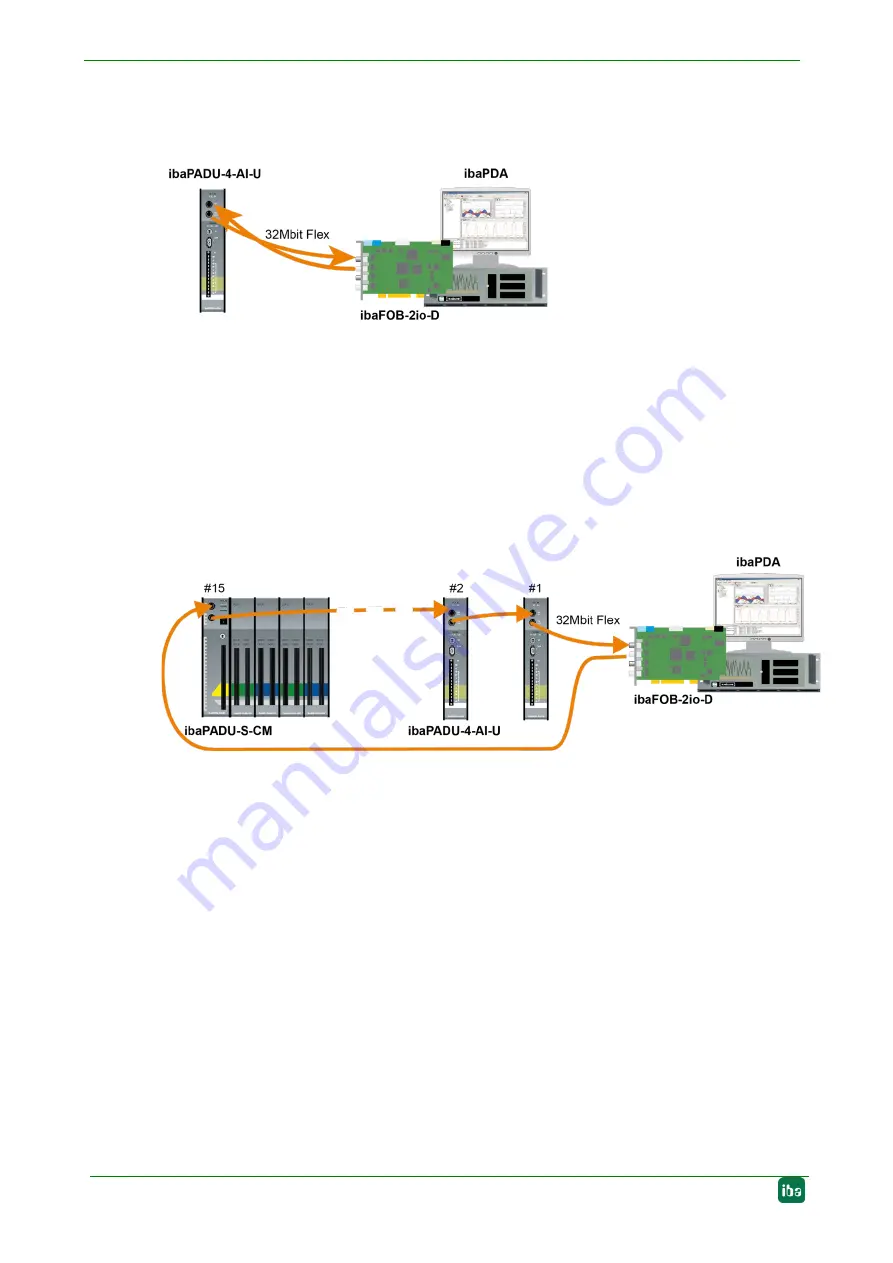
Manual
ibaPADU-4-AI-U
16
Issue 1.1
8
System integration
8.1
Point-to-point connection
Figure 5: Point-to-point connection with ibaPDA PC
The device is connected to the ibaFOB-D card in the ibaPDA PC via a bidirectional FO
line to transfer configuration and process data. ibaPDA detects automatically the con-
nected device.
The maximum sampling rate of 100 kHz is only possible with a bidirectional point-to-point
connection to ibaPDA. If several devices are to capture at 100 kHz, each device requires
a bidirectional connection to an ibaFOB-D card.
8.2
Ring topology
Figure 6: Ring topology
Up to 15 devices can be connected to a ring. Configuration and process data are trans-
mitted in the ring.
Other 32Mbit Flex-enabled iba devices can be integrated into the ring as well. The de-
vices in the ring are addressed via the S1 rotary switch.
The amount of data per participant is allocated dynamically. According to the number of
analog and digital signals configured in ibaPDA and the configured timebase the amount
of data is calculated by ibaPDA. The maximum total data rate is determined by the fiber-
optic links and must be divided through the number of devices and the amount of data
per device. A reference value is approx. 3000 Bytes per ms (amount of data per analog
channel: 2 Bytes). The devices can work with different cycle times, however the cycle
time must be an integer multiple of the smallest cycle. If the maximum data rate is ex-
ceeded, ibaPDA displays an error message and recommends increasing the timebase
or decreasing the amount of data. A sampling rate of 100 kHz cannot be adjusted in a
ring, this is only possible with a point-to-point-connection.
























